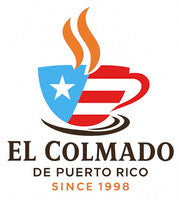Coffee arrived on Puerto Rico in 1736. It is said that the first introduced Arabica seeds were brought by Corsicans who immigrated to the island in search of better opportunities. The sugar cane was already in the hands of the Spaniard inhabitants, so the Corsicans settled in the mountains and opted for coffee to make a living. After several years, coffee became one of the top three agricultural products of the island, second to sugar cane and tobacco. Around 1860, the coffee industry was at its peak and it was at this time that European exports started to grow. In 1890, Puerto Rico was the sixth-highest country to export-grade coffee production worldwide. During this century, Puerto Rico enjoyed a second-to-none prestige in the coffee world. Unfortunately, in 1898, after the Spanish-American War, all the progress made in the coffee business started to fade. Political, economical and industrial PUERTO RICO FACTS 78 roast Navigating Origins Name Commonwealth of Puerto Rico Capital City San Juan Location Northeastern Caribbean, east of the Dominican Republic and west of the Virgin Islands Area 9,104 sq. km., or slightly smaller than the sate of Connecticut Languages Spanish and English, although English is spoken by half of the population Currency US dollar (USD) Population 3,994,259 Climate Tropical, rainy and warm. Hurricane season from June to November Terrain Mostly mountains with a coastal plain belt in the North by Rebecca e. atienza and etienne cardona the U.S. and Latin American countries threaten to vanish the current protections and the whole industry with them. Nevertheless, there is hope for specialty coffee in Puerto Rico. Since current taxes and regulations do not protect or affect special coffee, growers and producers could rely on this type of coffee to continue with the industry and, perhaps, compete in both volume and quality with the best coffees around the world. rebecca e. atienza is the sales representative for coffee Hacienda San Pedro in the U.S., Europe and Puerto Rico. She works with her dad, who has been a coffee grower for the last 30 years. Etienne Cardona worked for seven years as a quality specialist in the pharmaceutical industry, but now he is dedicated to the coffee industry. The husband and wife team are in the process of opening their own micro-roasting coffee shop. PUERTO RICO Atlantic Ocean San Juan Caribbean Sea changes almost made Puerto Rican coffee disappear. Being Different Puerto Rico, is a semi-autonomous territory of the United States, making it one of the two American coffee-producing territories, along with Hawaii. Being a coffee-producing country in the northern hemisphere makes agriculture and production processes very different in comparison with other countries. High labor rates, lack of workers, extreme operational costs and bad weather (specifically hurricanes) are some of the challenges that a specialty coffeeproducing state in Puerto Rico faces each year. These problems, along with low export-grade coffee volumes, make our coffees some of the most expensive coffees in the world. Certifications programs such as Fair Trade or Rainforest Alliance are unheard of by farmers, as they simply do not apply here. When you need to pay farm workers federal minimum wage and pickers $5 per almud (28 pound of cherries) collected (or around $10 per hour) these certifications don’t make much sense. Besides labor rates, education in Puerto Rico is socialized and workers’ children must attend at least elementary school. Also, and different than in the U.S., health care in Puerto Rico is a constitutional right, so the government offers a social health plan, available for all of the indigent families and offers an estate insurance which pays incapacity time for laborrelated conditions. In addition, farm management in Puerto Rico is regulated by the Commonwealth’s Department of Agriculture and the United States Department of Agriculture. All pesticides used are those approved by the Food and Drug Administration. They don’t leave residues and are only used according to the amounts suggested by the manufacturer. Unfortunately, production costs are so high that there are very few chances of producing organic coffee on the island. Still, most farms on the island are environmentally oriented. Oxidation ponds are used to collect used waters. The waste from de-pulped coffee is collected, stored and later composted and used as fertilizer for the following year’s crop. Some dry mills use the dry parchment and wood ovens as alternate fuel to the drying process to lower costs and reuse materials. Following these regulations is required for all coffee growers and producers, so producing the highest-quality coffee possible relies on will rather than production costs. All the coffee produced on the island is considered specialty but most of the farmers prefer to sell coffee for local consumption than to wander into the specialty coffee world. Currently the price of exported green coffee reaches $7.50 per pound. Perhaps Puerto Rican coffee prices resemble what all coffee around the globe should be. For now, we need to compete with high-quality coffees for less than half of the price.
